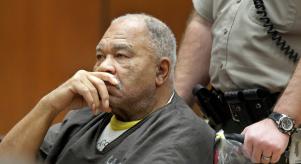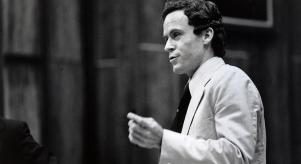
The towpath murders: death on the river bank
As the nation excitedly prepared for celebrating the coronation of a Queen Elizabeth II, a darker cloud hung over the idyllic riverside area of Teddington in May 1953. The atmosphere in the small, affluent Middlesex town couldn’t have been more different than the euphoric mood of the country when news broke that two local teenage girls had been brutally murdered on the picturesque towpath by Teddington’s non-tidal lock. The case was later described as ‘one of Scotland Yard’s most notable triumphs in a century’ although one plagued by controversy due to alleged police irregularities and the fact the killer’s weapon went missing while on police property. Best friends Barbara Songhurst, 16 and Christine Reed, 18, lived in Teddington and sometimes rode along the leafy meandering towpath at weekends. They enjoyed carefree adventures cycling in an era free of congested vehicles and took the same familiar route back home on the night they were attacked on Sunday, May 31st. During the day before their terrible fates, the girls cycled several times along the towpath stretching from Richmond to Teddington, where they stopped to chat to some boys who were camping on the route. John Wells, a witness, informed the police that the girls arrived at a camp at around 8pm and left at 11pm. They had then been seen cycling along the dark towpath at around 11.30pm which although sounding a little late for such young girls was indicative of how safe the tranquil area was perceived by its residents and also the level of trust their parents invested in their daughters, who never caused any anguish for their elders. This time the girls did cause anguish when they failed to return home.
The following day on Monday 1st June the first of the young victims was found.
The attack on Barbara Songhurst had taken place near Teddington Lock where the scene of the horrific crime featured trampled grass and some blood-stained daisies. A trail of blood led along the towpath where the killer had taken the victim’s body and thrown her into the water.
An ‘expert rapist’
Whatever the true circumstances of the attack on both females and who was attacked first, there is no doubting its brutality. The sixteen-year old’s body was found two miles down the Thames near St Catherine’s Convent in Twickenham. She exhibited terrible injuries caused by a heavy blow to the cheek and a fractured skull, along with three deep stab wounds in her back. Disturbingly for all to try and comprehend such savagery against a young girl, it was also confirmed that the teenage virgin had been raped. Pathologists indicated that the sexual attack had been carried out by what was bizarrely described at the time as an ‘expert rapist’ or certainly a man who had possibly committed such crimes before. The investigation into this terrible crime began in Teddington the next day.
It was unusual for the river authorities to be asked a request by the police to drain the river from Richmond to Teddington’s half lock at this particular time of year. This part of the river is drained from its tidal stretch to Teddington for repairs in late October. But the request this time was so that Police officers could painstakingly forage through the mud and silt using a mine detector looking for a murder weapon, particularly a sharp, hard object capable of causing the type of injuries inflicted on the young victim.
Two pairs of abandoned shoes and socks were also found during the search for clues but still no sign of Christine Reed. The following day on the 2nd June the eighteen year’s silver and blue bicycle was found in the river mud, a hundred yards up-stream from the murder site. On Friday, June 5th, amid Coronation celebrations where 20,000 people attended the Teddington River Pageant, the police continued the gruelling search for Reed’s body. Loudspeakers at the event announced to the bigger than expected crowd ‘We are not looking for bodies. We are only here for the pageant’
‘A monster, as strong as an ape.’
The next day, Saturday 6th June, Christine’s body was found floating near Glover’s Island less than a mile from Richmond bridge and close to Eel Pie Island. Similar to Barbara’s injuries Christine’s skull had also been fractured along with six stab wounds in her chest. She had also been raped. The pathologist stated that the attacks had been ‘the work of a maniac’ and that the assailant was ‘a monster, as strong as an ape’. The police shut the half-lock gates at Richmond against the incoming tide. The intensive and gruelling search in the river’s mud still failed to reveal a credible murder weapon or for that matter any sign of Barbara’s bicycle. It was assumed that the killer may have used it to escape the scene of his evil handiwork. Initial thoughts were that the double rape and murder had been carried out by two men.
Duncan Webb, a reporter for the News of the World at the time happened to have been in Teddington on the night of the ferocious attack. For a man who usually reported crime this time he found himself being questioned as a potential suspect. Standard police procedures relating to crimes of rape meant any man within the crime vicinity had to be considered as a suspect and investigated. The inquisitive reporter suggested to the police that the attacks, rather having been committed by two men were more likely to have been carried out by one assailant. Webb’s assumption was based on evidence that the similar injuries found on both victims indicated a single MO by the killer. The notion that two men, responsible for the rape and murder of two girls in the same place and sharing the same MO was as Webb suggested less plausible.
Once the theory of one man being responsible for the attacks was given credence what still couldn’t be explained was how one man managed to attack both girls at the same time when one of the girls would have been free to run away as the other was being assaulted. Then a genius notion struck Webb. Perhaps the killer had thrown the knife at one victim? The idea would go some way to explain the wounds in Barbara’s back. Webb’s theories were taken on board to the extent that police made enquiries at local circuses and variety theatres to establish if any knife throwing entertainer had been in Teddington on the night of the murders. But the enquiries drew a blank.
Murder Squad Detective Herbert Hannam, known for his gruff, combative mood, reluctantly took on board reporter Webb’s other suggestion, that a murderer operating at such a late time at night had to be a local man or at least someone who was familiar with the area and the location of nearby bus stops and railway stations. It also beggared belief that anyone having inflicted such visceral brutality on two girls wouldn’t have visible blood signs on their person that may have been noticed by passersby or passengers. All these sensible suppositions were given short shrift by Detective Hannam who reiterated to his investigating officers ‘what we want is facts, not theories’.
Focusing on facts led the police to take one thousand, six hundred and fifty statements from adult resident males in the Teddington area. The net of suspicion was extended to men who had also stayed at local hotels, guest houses or frequented local pubs, cinemas and restaurants in the Richmond upon Thames area. This painstaking level of questioning of hundreds of men came up with nothing. Even at this early stage, it was feared that the sadistic double rape and murder case may go unsolved.
Looking further afield the police revisited a vicious case of the rape of a 14-year-old girl on Oxshott heath in Surrey, eight miles from Teddington. The attack took place a week before Christine and Barbara were killed. It had been reported at the time that a man had been terrifying women and girls in open spaces on the Surrey side of the river. On June 17th, just over two weeks since the Teddington murders, a woman by the name of Mrs Birch was sexually assaulted in Richmond Park. A police patrol car later picked up a man walking aimlessly in Weybridge some eleven miles away from the scene of the assault. Twenty-two year-old Alfred Charles Whiteway was taken to the police station but released after he convincingly conducted himself. He was also offered an apology for having been picked up.
The following June 18th when one PC Cosh was cleaning patrol cars in Kingston Police station he happened to find a hatchet shoved under the rear seat of one car. Not thinking too much about how it got there he put it in his locker before leaving the station for the day but then became ill. As a consequence of being sick, he was off work for five days. On his return PC Cosh took the hatchet home and used it for domestic chores. This careless act of not questioning the origin of the hatchet delayed investigations to apprehend what was undeniably a sick and dangerous killer, who was still at large and able to continue attacking members of the public.
On June 28th, nearly a month since the vicious murders of Barbara Songhurst and Christine Reed, a passing motorist stopped for a male hitchhiker. Something about the passenger reminded the observant driver about the mystery man wanted in connection with the Oxshott rape. Unsettled by the incident the driver went to the police with his concerns. The hitcher was picked up and charged with the Oxshott rape. Placed in an identity parade he was identified by Mrs Birch as the man who had assaulted her in Richmond park. The identified man was Alfred Whiteway who had been questioned and released in Weybridge weeks earlier. Detective Hannam was certain they had their killer.
During the investigation, it was discovered that murder suspect Whiteway was closely associated with victim Barbara Songhurst’s family. Barbara’s sister in law, June, had once been Whiteway’s girlfriend. Furthermore, June’s sister, Josephine Knight had attended school with Whiteway and had once hoped to marry him. More bizarrely, the sixteen-year-old victim’s older brother Danny knew the suspected killer well and defended his character to the police. Barbara’s brother was adamant that Whiteway would never have hurt his sister. June also insisted that Whiteway was a ‘kind and considerate man’ even though they were well he aware he had a strange habit of carrying a knife. The family’s view of Whiteway was that he was a ‘decent boy’ and a ‘gentleman’
Despite Whiteway having an unblemished reputation with the Songhurst family, the fact remained that he owned a lethal Ghurkha knife. It soon became apparent to Detective Hannam that the suspect was not only a keen knife throwing enthusiast but that his exceptional skills in this area meant he could split a matchbox from thirty yards. But another far important fact came to light when it was revealed that Whiteway could hit a chalk line on a tree with a hatchet from up to forty yards away.
When asked where the hatchet was that he threw at trees Whiteway replied that he kept it in a cupboard at home. But despite a thorough search, the police found nothing. Incredibly when Detective Hannam asked about it again Whiteway admitted that Kingston police had it after he had pushed it under the seat of the police car when he was picked up at Weybridge.
When police raced over to Kingston station they discovered that PC Cosh after having used the axe for weeks for chopping firewood had unwittingly destroyed any forensic evidence due to his fingerprints. The blade had also become blunted. But the picture became clearer now of Whiteway, far from the perfect gentleman as claimed by others, was, in fact, a sexual fiend who would go out at night on raping expeditions armed with an axe. The mystery of what kind of weapon was capable of fracturing skulls and cracking cheekbones now appeared to be solved.
Even though forensic evidence was now not possible to be found on the primary murder exhibit its reappearance brought about an unexpected reaction. When Detective Hannam placed the hatchet on the table in front of Whiteway he recognised it to the extent that he even complained it had been ‘bashed about’ and blunted, as if it was a priceless possession of his. And when Whiteway was told bloodstains had been found in an eyelet and seam of his shoes the effect on him was one of angry resignation. Confronted with his own weapon and news of forensic evidence the dawning reality that he had been caught prompted Whiteway to utter: 'You know bloody well it was me. You know bloody well I done it. What a bloody mess. I’m mental. I must have a fucking woman. I can’t stop myself” In a chilling matter of fact attitude Whiteway described how he attacked and killed both girls on the night of 31st May, making out he initially only saw one and hitting her with the hatchet before noticing her friend further down the towpath who was screaming. ‘I nipped over, and shut her up’ Whiteway’s emotionally detached demeanour, dismissive of the cruelty and savagery he inflicted on two innocent teenage girls, clearly indicated a sociopathic mind. But was he mad? As far as Whiteway was concerned, it was his mental state at fault as he complained to the police that the ‘doctors’ wouldn’t do anything to help him, possibly hoping or supposing that a jury would bring about a verdict of diminished responsibility. Looking at the paper in front of him he shouted ‘I can’t stop it. Give us it. I’ll sign it’
When the case went to trial at the Old Bailey it became apparent that the defence saw a way of undermining the prosecution by questioning police procedures during the interrogation process, particularly over the recording of interviews where Whiteway claimed he didn’t know what he was signing.
The tense exchange in court pitted the celebrated murder squad detective Bert Hannam against the barrister Peter Rawlinson for Whiteway. Nellie Whiteway, the accused’s soft-spoken wife testified in the dock that her husband had been with her at her parent’s house drinking tea on the porch at the hour the two victims were murdered. 'He asked me what time was it. It was 11.30 pm' she said before breaking down in court.
Rawlinson put Hannam through a gruelling two-day cross-examination on the methods he adopted in drawing-up the signed confession. He opened substantial gaps in the evidence which at one point even suggested that the case against Whiteway could be lost due to police irregularities when barrister Rawlinson suggested to the jury that Detective Hannam had fictionalised and manipulated the confession. Despite the heated exchanges in court between defence and prosecution the jury didn’t take too long to make their decision over the prisoner’s fate. They dismissed Nellie Whiteway’s emotional alibi, the accusations from the defence team about recording irregularities and also the notion of diminished responsibility through mental illness. It took less than fifty minutes for them to find Whiteway guilty of double rape and murder. He was hanged by the legendary hangman Albert Pierrepoint at Wandsworth prison on December 22nd 1953.




